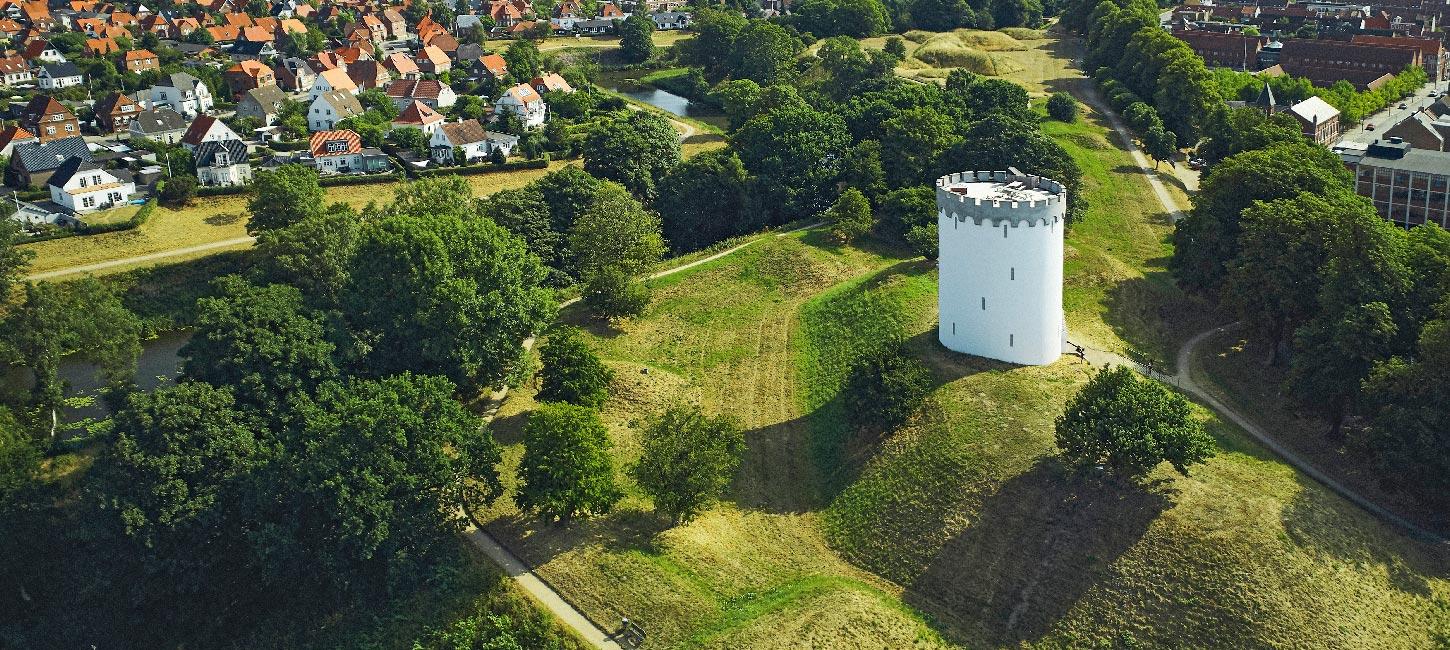
Fredericia Ramparts
The Fredericia Ramparts are among Denmark’s most impressive and best-preserved fortifications. Built in the 1600s as part of a major defense strategy, the ramparts now stand as a powerful reminder of Fredericia’s military past and cultural heritage.
Fredericia and Fredericia Ramparts
Fredericia was founded by Frederik III in 1650 as a defensive fortress in troubled times. Wars ravaged Europe in the early 1600s. Jutland was occupied in 1626-29, 1643-45 and again from 1657-1660.
The fortress was soon named after the king himself, and it was built at the tip of Bersodde on the narrow part of the Little Belt for strategic military reasons. Bersodde was a peninsula, and it was, therefore, easier to defend the fortress against attacks over land. It was assumed that the superior Danish fleet had the fortress’s back to the sea. The short distance to Funen meant transferring troops from Funen to Jutland was relatively easy, and vice versa. And finally, the fortress could control traffic through the northern part of the Little Belt.
It started with coercion, but then came religious freedom
The king wanted a new, modern fortress town with canals and a royal castle. The fundamental idea was that the fortress should have been inhabited. There should be commerce and crafts, and farmers who could ensure supplies and food. As the fortress started on a bare field, it lacked inhabitants from the beginning! Not a soul lived here, so the king passed a decree and about 40 families from the nearest villages were forced to move inside the ramparts. They probably weren’t thrilled about that. However, the king’s word was law.
But 40 families just was not enough. The fortress was first named Frederiksodde (Frederik’s Headland). However, colloquially it became Frederiks Øde (Frederik’s Desolated). So, the name didn’t help to attract people. Therefore, in 1661 the Latin Fredericia was used.
It didn’t help much, however. So, the king gave the town some special privileges. In addition to some economic privileges, Fredericia was granted religious freedom, which meant that Jews, Catholics and Reformed Christians came to the town. In other words, Fredericia was Denmark’s first free town. The dream was to attract moneyed men and skilled craftsmen, but the plan was only partially successful. And the town’s inhabitants came to consist of a motley crew of peasants, soldiers, mercenaries, bankrupts, criminals, fortune hunters, and craftsmen and merchants from near and especially far.
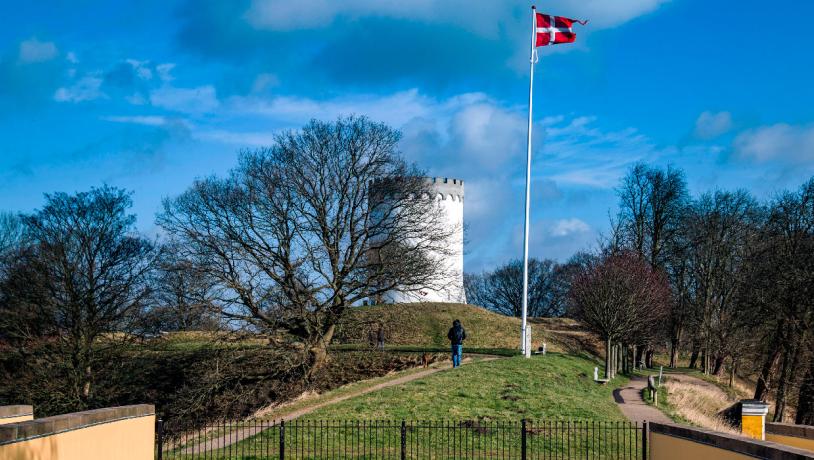
Photo:Destination Trekantområdet
From fortifications to today’s experiences
The story of Fredericia’s creation is unique and unlike any other Danish town, which is clearly visible from the top of the jagged bastions and in the winding streets overlooking the ramparts at one end and the water at the other.
The ramparts in Fredericia are today one of Northern Europe’s largest and best-preserved ramparts. Explore them. Among moats, cannons, town gates and bastions, you will find fantastic viewpoints and over 18 km of trails in green surroundings. See the Ramparts, the town and the Little Belt from the top of the White Water Tower and stop at Landsoldat Square, where you can see the world’s first statue depicting the common soldier.
As a fortified town, Fredericia has been subjected to sieges, bombardments, defeats, and victories. The most important victory of 6 July 1849 is still commemorated every year at the festive 6 July Days in Fredericia.
“Tell your soldiers: Attack quickly and vigorously. And use the baronet instead of wasting time on gunfights. Then it will go well.” Major General Bulow
Civil War in Denmark
When you look out over the countries of Europe, it may seem that nation-states have always been here. However, the nation-state is a construct that is only between 150-200 years old. In the middle of the 19th century, the Danish kingdom was a so-called “united monarchy”. The king ruled over Denmark with a border to the south, which ran a little south of Kolding. He was also Duke of Schleswig-Holstein (and Lauenburg). The united monarchy thus went to Hamburg.
The outline of the German nation-state was taking shape in the loose union: The German Confederation. The Confederation consisted of 4 city-states and 34 principalities, of which Prussia and Austria were the largest. Holstein and Lauenburg were members of the German Confederation. Schleswig was mixed Danish-German and stood outside.
The Germans - the Schleswig-Holsteiners - wanted to drag Schleswig into the German side. Denmark, for its part, tried to incorporate Schleswig into the new constitution of 1848/49. Here, the king’s power had been limited, and the people’s demand was a democratic Denmark for those who spoke and felt Danish.
The pro-Germans rebelled against this as they could not see themselves in such a ‘mob rule’ with Danes for Denmark. The Three Years’ War of 1848-50 was a reality, and Prussia and Austria participated and supported the Schleswig-Holsteiners.
One of the three Years' War’s most famous battles occurred on 6 July 1849. Fredericia had been under siege for two months. The Schleswig-Holstein army numbered about 14,000 soldiers and had entrenched itself in front of the fortress with trenches and earth ramparts.
Just before the battle, the Danish army had transferred nine battalions to Fredericia, and on 4 July, the General Staff held a council of war in Vejlby Rectory just outside Middelfart on Funen. Here the plan of attack was devised. During the nights of 3-5 July, the last part of the attack force was transferred from Funen to Fredericia.
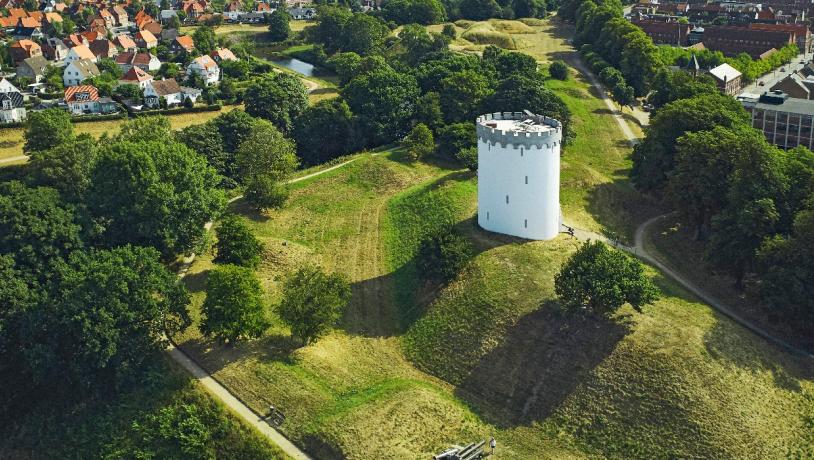
Photo:Visit Fredericia
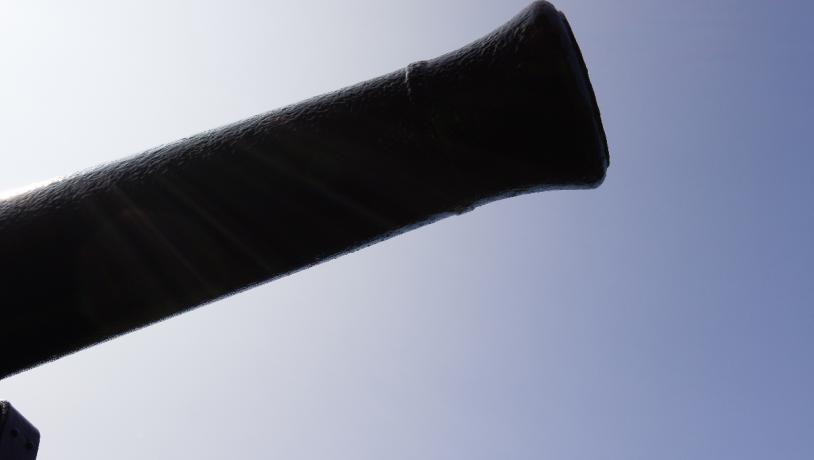
Photo:Destination Trekantområdet
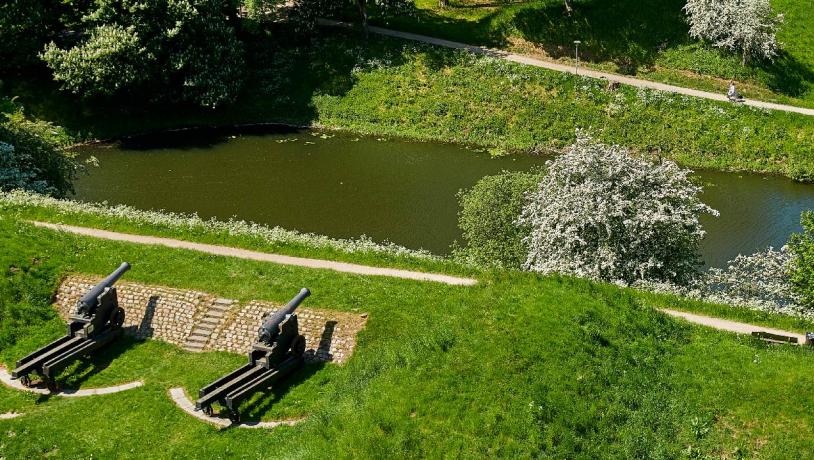
Photo:Destination Trekantområdet
And at 1 a.m. on 6 July, the sortie was set in motion, and 19,404 Danish soldiers advanced against the 14,000 Schleswig-Holstein troops, who were somewhat surprised. It was unheard of to attack at night, and such battles belonged to the daytime. After 2-3 hours, the battle was over, and the enemy was on the run.
The victory gave the Danes a huge morale boost, but they also suffered significant losses. Therefore, the war continued and was only settled when the great powers of Russia, Sweden and England intervened and enforced a peace that essentially meant a return to the situation before 1848.
That solution was untenable, and in 1864, the conflict flared up again. Here the Danes were the big losers and lost the duchies, including all of Schleswig. The border was now just south of Kolding. And it wasn’t until reunification in 1920 that we got the present southern borders, where they were determined - not by the bloody speech of the baronetage, but in a ballot box with a pencil.
When you see the churches in Fredericia, they have no towers because during a siege, the enemy would have no visible points to aim at.
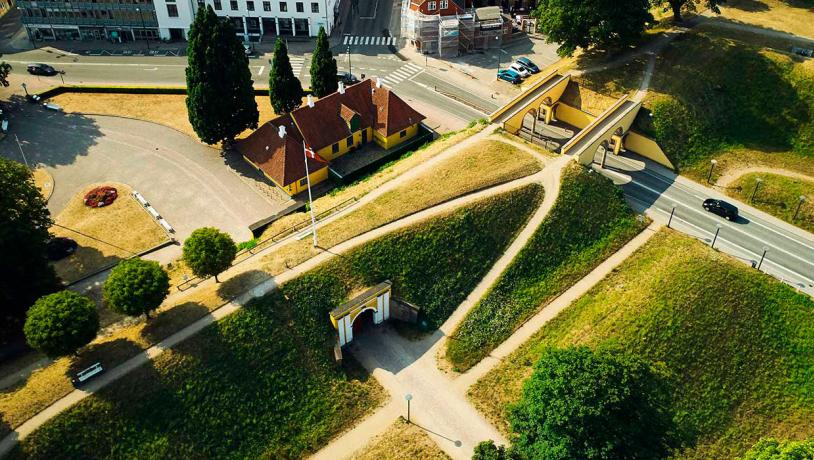
Photo:Visit Fredericia
History in your ears
The history of the ramparts and fortress town is bursting with dramatic events, clever manoeuvres, victories, defeats and an exciting cast of characters.
If you can’t get enough of Fredericia’s unique history, we recommend the ‘Fredericia town and fortress’ podcast, which in 12 episodes, tells the fortress town’s unique history and place in Danish history. The podcast is free to listen to and can be found where you usually find podcasts.
Both the audio guide and the podcast are available in English and Danish.
Once you have explored Fredericia Ramparts, stop by Fredericia Town Museum for interactive exhibits, stories and buildings from the past.
Guided tours
The town’s history is full of gunpowder and bullets and generals who were useful, but the story of the fortress town by the Little Belt is also about more than defence.
If you don’t want to settle for an electronic guide, try a flesh-and-blood guide and join a guided tour of Fredericia Ramparts and the architecturally distinctive town centre. In the good company of the town’s guides, you are guaranteed a lively tour through the town’s history, which the guides know inside out - perhaps even spiced up with fortress town tales and quirky facts or an old wives’ tale from the old days.
We arrange guided tours on a regular basis, for which you can buy tickets at visitfredericia.dk. It’s also always possible to book a private guided tour - whether you are just a few or a coach load. We have English and German speaking guides so everyone can take the exciting stories home.